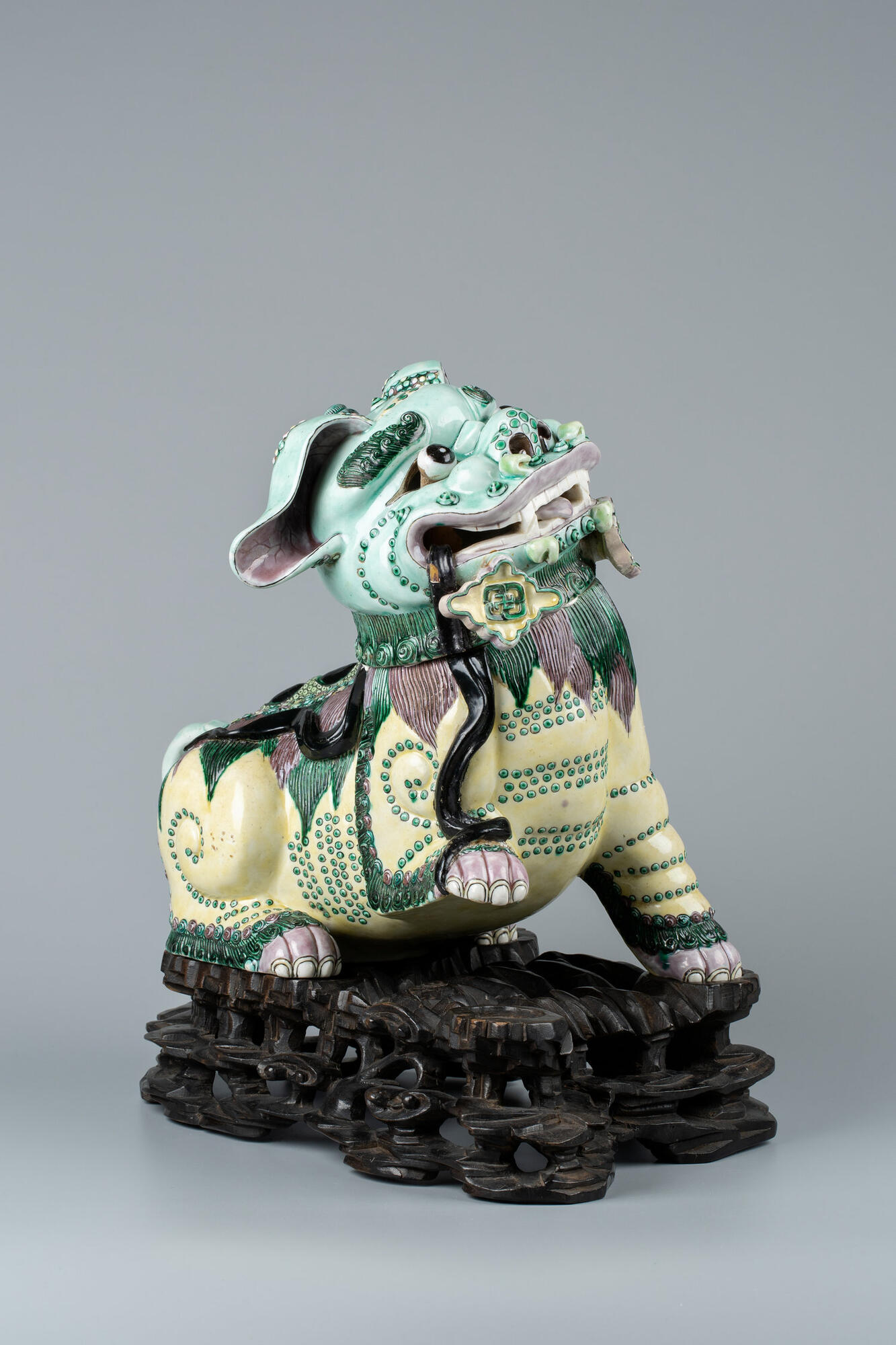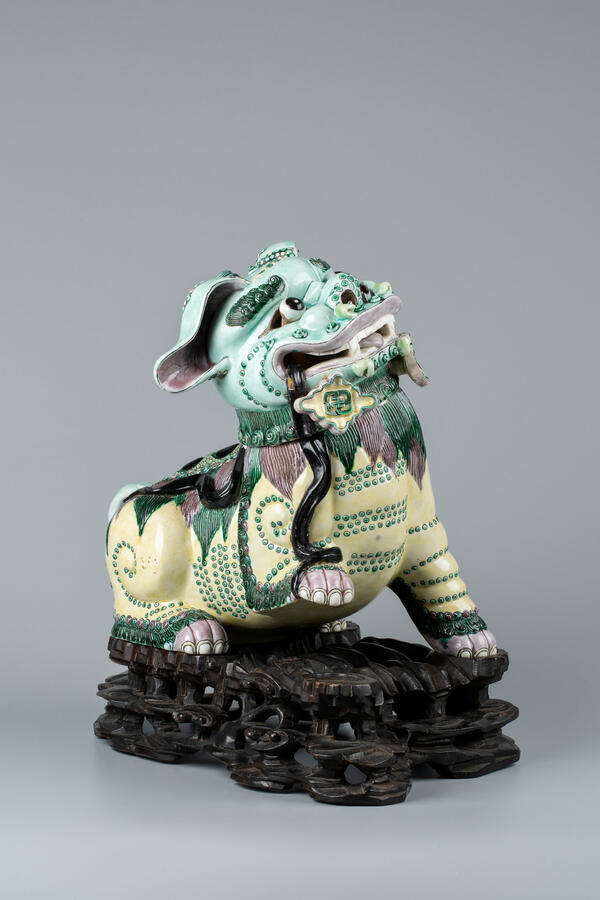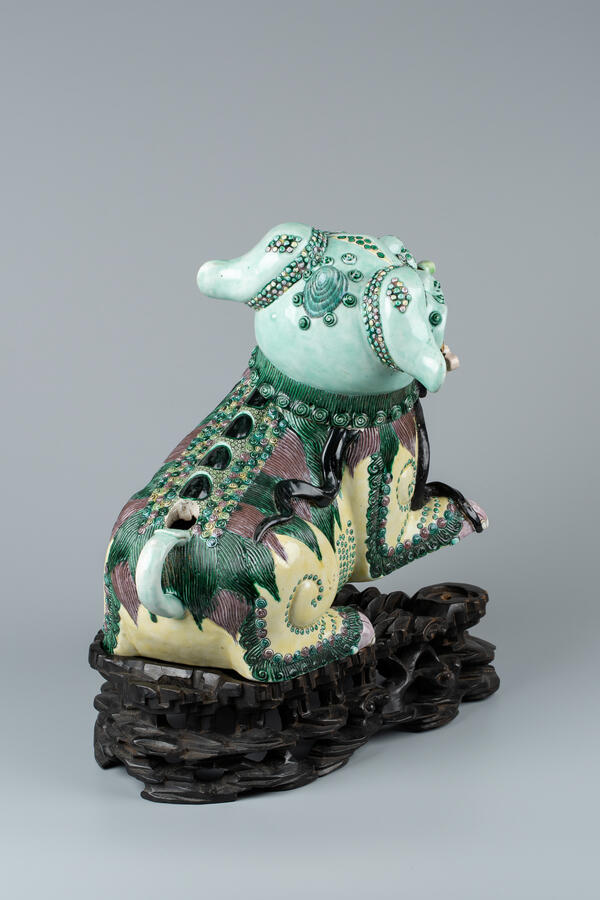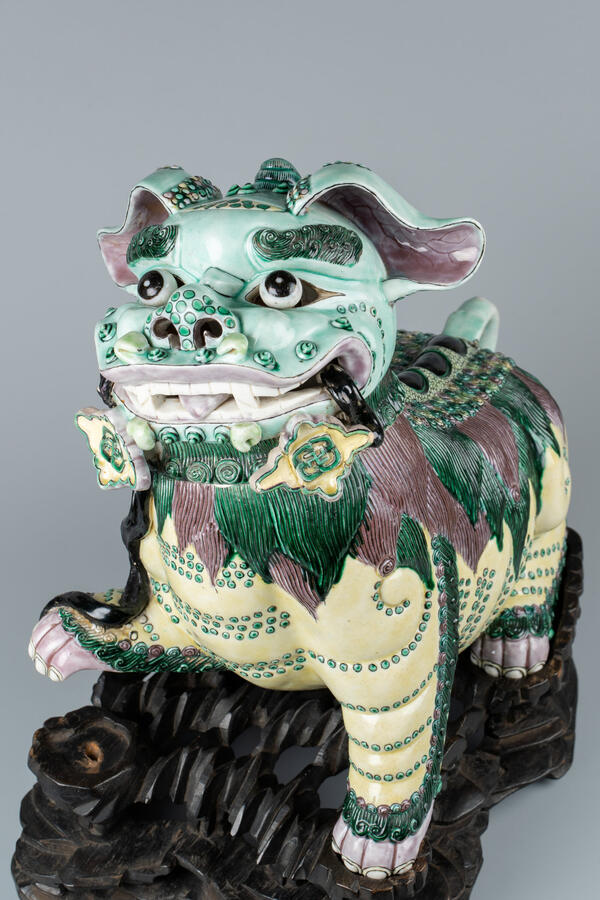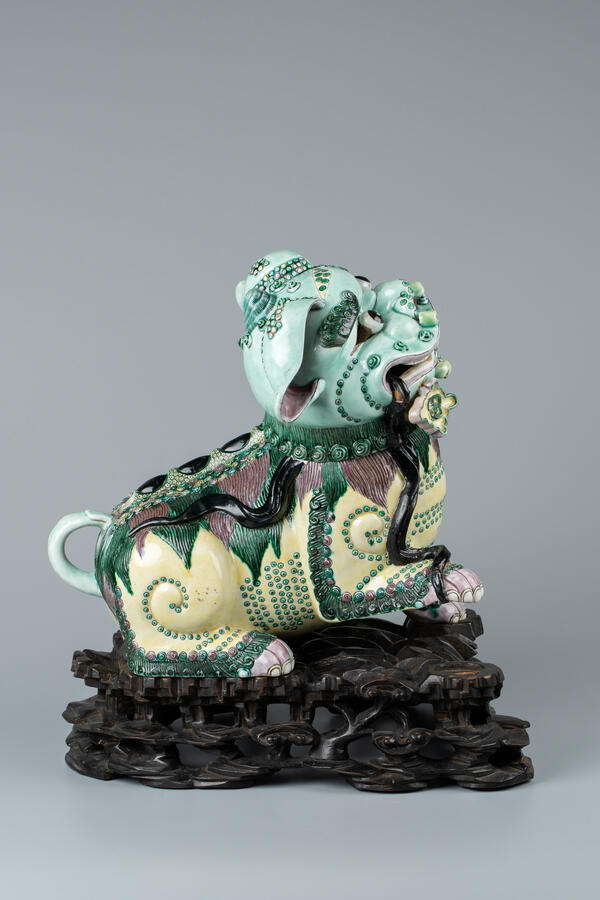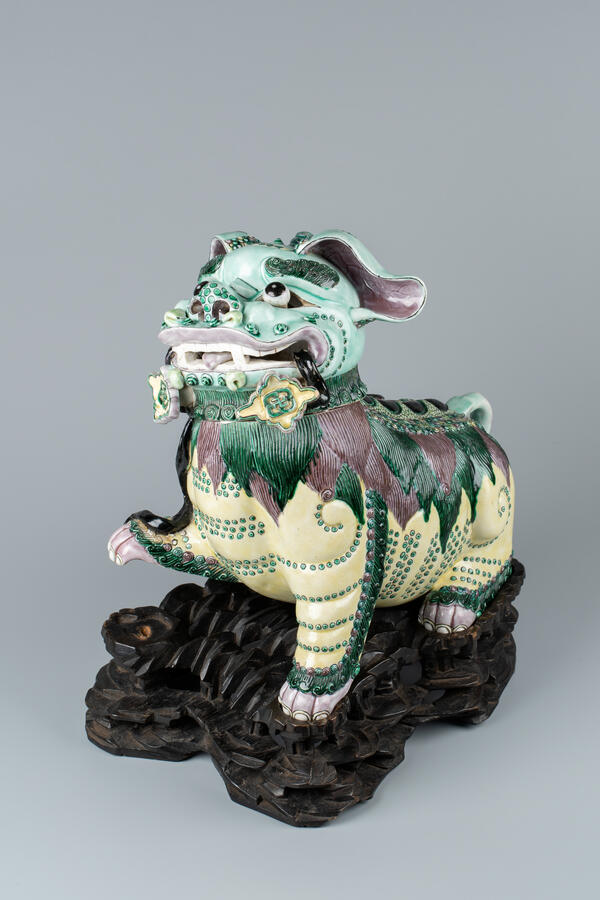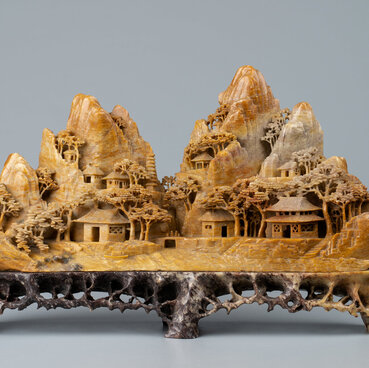The Samara Regional Art Museum houses a variety of Chinese porcelain items. The figurine “Lion of Fo”, or Buddha’s dog is quite peculiar. Lions do not naturally live in China, and the animal depicted by the artist looks more like a dog, for example a pug. The statuette belongs to the “green family” porcelain, as it is predominantly painted in green enamel. The artist meticulously worked out all the details. The figurine is mounted on a wooden carved stand.
One detail is missing under the lion’s right paw. Usually, a male lion has a ball with a “flower of life” pattern under his right paw, which in the Buddhist tradition is interpreted as “tama” — a treasure, a symbol of Buddhist knowledge, which carries light into darkness and is capable of fulfilling desires. A lioness in this case is usually depicted holding a cub with her paw.
In the Chinese tradition, the image of a lion has still retained its symbolic meaning, as evidenced by the sculptures of lions, which are usually placed in front of the house. They are designed to protect the inhabitants of the house from evil forces and bring happiness to both residents of individual houses and entire streets. Traditional Chinese art utilizes symbols designed to protect and bring happiness, and the image of a lion fully corresponds to these aims.
Chinese porcelain is about 3000 years old, which is proven by archaeological digs carried out in the Yellow River Valley. However, a number of researchers call these finds “protoporcelain”, since only white clay was used to make items at that time: such a material is not porcelain in the normal sense of the word. In their opinion, porcelain appeared at the beginning of the 7th century AD, during the reign of the Tang Dynasty (618 — 907 AD). During the Song Dynasty (960 — 1279), Chinese porcelain reached a universally recognized status.
By this time, hundreds of thousands of people were engaged in porcelain manufacture. Some workers washed the clay, others maintained the required temperature in the furnace. Consequently, porcelain manufacture technologies were further developed during the reign of the Song Dynasty and were used as a standard for centuries, only the shape and color palettes changed. The 17th — 18th-century porcelain is distinguished by a special whiteness of the shard, elegance and a variety of forms and colorful painting. During this period, under the emperor of the Qing dynasty (17th — 20th centuries), the entire world learned the secret of Chinese porcelain.
One detail is missing under the lion’s right paw. Usually, a male lion has a ball with a “flower of life” pattern under his right paw, which in the Buddhist tradition is interpreted as “tama” — a treasure, a symbol of Buddhist knowledge, which carries light into darkness and is capable of fulfilling desires. A lioness in this case is usually depicted holding a cub with her paw.
In the Chinese tradition, the image of a lion has still retained its symbolic meaning, as evidenced by the sculptures of lions, which are usually placed in front of the house. They are designed to protect the inhabitants of the house from evil forces and bring happiness to both residents of individual houses and entire streets. Traditional Chinese art utilizes symbols designed to protect and bring happiness, and the image of a lion fully corresponds to these aims.
Chinese porcelain is about 3000 years old, which is proven by archaeological digs carried out in the Yellow River Valley. However, a number of researchers call these finds “protoporcelain”, since only white clay was used to make items at that time: such a material is not porcelain in the normal sense of the word. In their opinion, porcelain appeared at the beginning of the 7th century AD, during the reign of the Tang Dynasty (618 — 907 AD). During the Song Dynasty (960 — 1279), Chinese porcelain reached a universally recognized status.
By this time, hundreds of thousands of people were engaged in porcelain manufacture. Some workers washed the clay, others maintained the required temperature in the furnace. Consequently, porcelain manufacture technologies were further developed during the reign of the Song Dynasty and were used as a standard for centuries, only the shape and color palettes changed. The 17th — 18th-century porcelain is distinguished by a special whiteness of the shard, elegance and a variety of forms and colorful painting. During this period, under the emperor of the Qing dynasty (17th — 20th centuries), the entire world learned the secret of Chinese porcelain.
